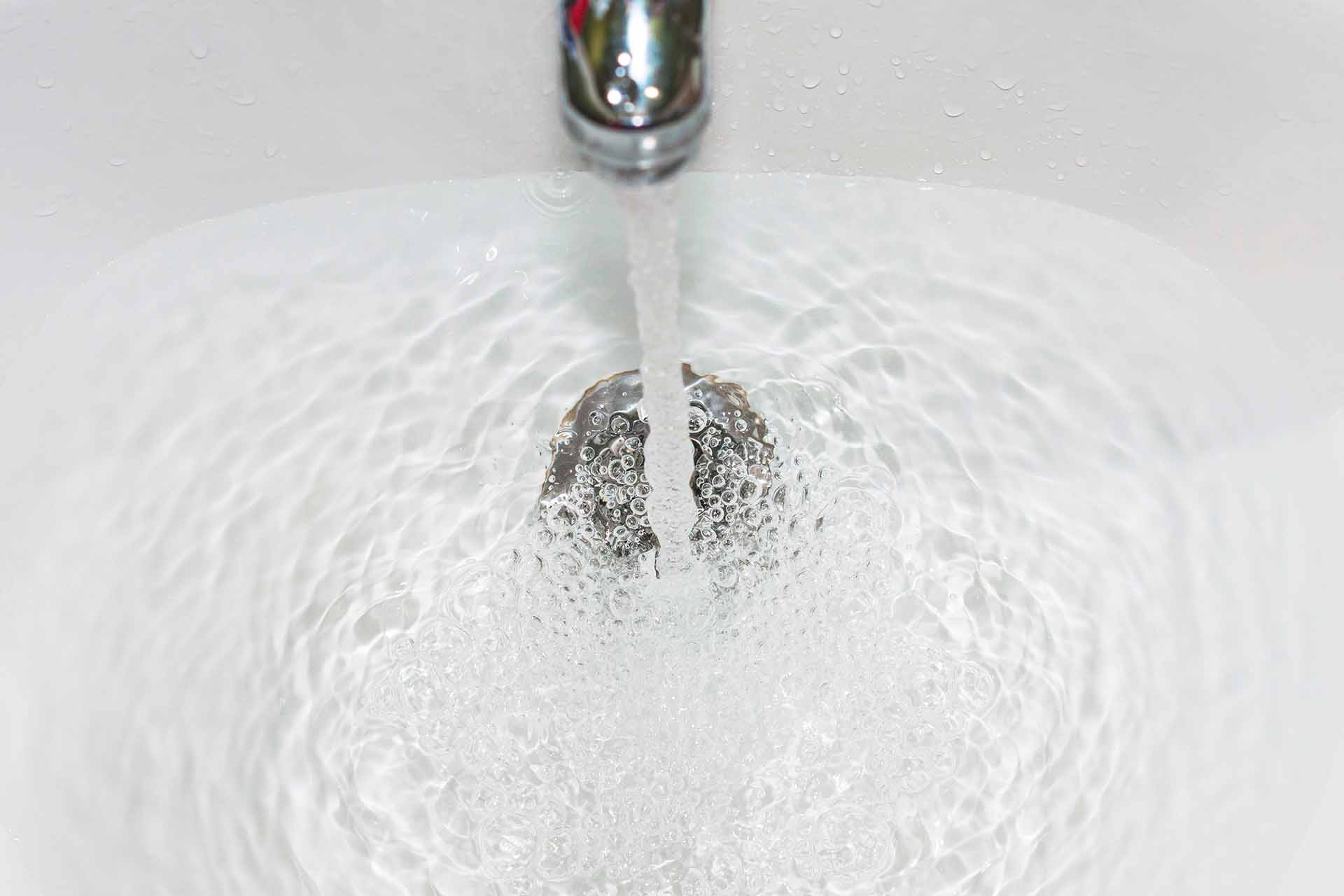Why Your Sink Draining Slowly (And How to Fix It)
A slow-draining sink can be one of the most frustrating household nuisances. What starts as a minor inconvenience can quickly escalate into a complete blockage, leading to stagnant water, foul odours, and potential water damage. Understanding why your sink is draining slowly is the first step towards finding a solution. This comprehensive guide will delve into the common causes of sluggish drainage, offer effective DIY remedies, and explain when it’s time to call in the professionals like Drainage & Plumbing LTD, your trusted experts in South East England.
Understanding the Basics of Your Drainage System
Before diving into the problems, let’s briefly understand how your sink’s drainage system works. Every sink in your home is connected to a network of pipes designed to carry wastewater away. This system typically includes:
- The Drain Opening: Where water enters the pipe.
- The P-Trap (or S-Trap): The curved section of pipe directly beneath the sink. This trap always holds a small amount of water, creating a seal that prevents sewer gases from entering your home. It’s also a common place for clogs to form.
- Branch Drain Pipes: These pipes carry water from individual fixtures (like your sink) to the main waste stack.
- Main Waste Stack: A large vertical pipe that collects wastewater from all fixtures and carries it down to the main sewer line or septic tank.
- Vent Pipes: These pipes connect to the drainage system and extend through your roof. They regulate air pressure within the pipes, ensuring smooth drainage and preventing a vacuum that could pull water out of the P-traps.
When any part of this system becomes obstructed, water flow is impeded, resulting in a slow drain.
Common Culprits Behind Slow-Draining Sinks
Several factors can contribute to a sink draining slowly. Identifying the likely cause will help you choose the most effective course of action.
1. Hair Accumulation (Especially in Bathroom Sinks)
Perhaps the most frequent offender in bathroom sinks is hair. Loose strands of hair, especially long hair, easily wash down the drain during showering, shaving, or washing hands. Over time, these hairs intertwine with soap scum, toothpaste, and other debris, forming a sticky, resilient mass that progressively narrows the pipe’s diameter until it significantly restricts water flow. This type of clog often forms just below the drain stopper or within the P-trap.
2. Grease and Food Particles (Predominantly in Kitchen Sinks)
Kitchen sinks face a different set of challenges. Pouring cooking grease, oils, and fats down the drain is a major mistake. While liquid when hot, these substances cool and solidify as they travel through your pipes, adhering to the pipe walls. Over time, this sticky layer accumulates food scraps (even small ones that get past a garbage disposal), coffee grounds, and other debris, creating stubborn, greasy blockages. This build-up of fat in drains is a common issue that professionals like Drainage & Plumbing LTD are well-versed in addressing.
3. Soap Scum and Mineral Buildup
Soap scum, a sticky residue formed by the reaction of soap with hard water minerals, can cling to pipe interiors. While often associated with showers and bathtubs, it also contributes to drain blockages in sinks, especially in areas with hard water. Over years, mineral deposits from hard water can also accumulate on pipe walls, leading to narrower pipes and slower drainage, even in the absence of a significant clog. This is a common, insidious problem that often goes unnoticed until the drain becomes noticeably slow.
4. Foreign Objects
Accidental drops are a common source of clogs, particularly in bathroom sinks. Small items like jewellery, cotton swabs, dental floss, bottle caps, or small toys can get lodged in the drain or P-trap, creating an immediate obstruction or serving as a base for other debris to accumulate. In kitchen sinks, silverware, small utensils, or even packaging materials can fall down the drain.
5. Vent Pipe Issues
The vent pipes are crucial for proper drainage. If a vent pipe becomes blocked – perhaps by a bird’s nest, leaves, or even an animal – it can disrupt the air pressure in the drainage system. Without proper venting, air pockets can form, preventing water from flowing smoothly, leading to gurgling sounds and sluggish drains. This issue can affect multiple fixtures throughout your home, not just a single sink.
6. Sewer Line Problems
While less common for a single slow sink, a slow-draining sink (especially if accompanied by other slow drains or backed-up toilets) could indicate a more serious problem with your main sewer line. Issues such as tree root intrusion, significant blockages from foreign objects, pipe collapse, or bellied pipes (sections of pipe that have sagged, collecting water and debris) can impede the flow of wastewater from your entire home to the municipal sewer system. This requires professional assessment and intervention.
DIY Solutions for Slow Drains
Before calling for professional help, there are several effective DIY methods you can try to clear a slow-draining sink. Always proceed with caution and ensure proper ventilation, especially when using chemical products.
1. The Boiling Water Flush
This simple method is often effective for minor grease or soap scum clogs.
- Remove any standing water from the sink.
- Boil a pot of water (about 1-2 litres).
- Carefully pour the boiling water slowly down the drain in several stages, allowing it to work on the clog between each pour. The heat can help dissolve grease and loosen other debris.
- Follow with a flush of hot tap water to see if the drain has cleared.
2. Baking Soda and Vinegar
This classic eco-friendly remedy creates a fizzing reaction that can break down clogs.
- Pour about half a cup of baking soda down the drain, followed by half a cup of white vinegar.
- Immediately cover the drain opening with a stopper or cloth to contain the reaction and force it down the pipe.
- Let it sit for 20-30 minutes (or even overnight for stubborn clogs).
- Follow up with a flush of boiling water.
3. Using a Plunger
A plunger can create suction and pressure that dislodges clogs.
- For a kitchen sink with a double basin, block the other drain tightly with a wet cloth. For a bathroom sink, block the overflow opening with a wet cloth or sponge.
- Fill the sink with enough water to submerge the rubber cup of the plunger.
- Place the plunger firmly over the drain opening, ensuring a good seal.
- Plunge vigorously 15-20 times in a strong up-and-down motion, maintaining the seal.
- Quickly pull the plunger off the drain to break the seal and check if the water drains. Repeat if necessary.
4. Simple Drain Snake or Auger
For clogs further down the pipe, a small, manual drain snake (or a plastic drain-cleaning tool with barbs) can be very effective, especially for hair clogs.
- Remove the drain stopper.
- Carefully insert the snake into the drain opening, feeding it down the pipe until you feel resistance.
- Twist and push the snake to snag the clog.
- Slowly pull the snake back out, hopefully bringing the clog with it. Be prepared for a messy removal.
- Flush with hot water to clear any remaining debris.
5. Cleaning the P-Trap
If the clog is localised in the P-trap, you can manually clean it. This is best done for kitchen sinks where food particles are common.
- Place a bucket directly under the P-trap to catch any water and debris.
- Using channel lock pliers or a wrench (or by hand if it’s a slip nut connection), carefully loosen the nuts on both ends of the P-trap.
- Remove the P-trap.
- Clear out any accumulated sludge, hair, or debris from inside the trap. You might need a brush or old coat hanger.
- Rinse the trap thoroughly.
- Reattach the P-trap, ensuring the nuts are hand-tightened and then given a quarter turn with pliers to create a snug, leak-free seal.
- Run water slowly at first to check for leaks.
6. Chemical Drain Cleaners (Use with Caution)
While readily available, chemical drain cleaners should be a last resort for DIY attempts. They contain harsh chemicals that can corrode pipes (especially older ones), damage septic systems, and pose significant health risks if not handled correctly. If you do use them, follow the manufacturer’s instructions precisely, ensure good ventilation, and never mix different products. They often provide a temporary fix and can damage your pipes in the long run.
When to Call the Professionals: Recognizing Serious Issues
Sometimes, a slow drain is a symptom of a larger, more complex problem that requires professional expertise. Knowing when to put down the plunger and pick up the phone can save you time, money, and further damage.
1. Persistent Slow Drains
If you’ve tried multiple DIY methods and your sink continues to drain slowly, or if the problem recurs frequently despite your efforts, it’s a clear sign that a more stubborn or deeply lodged clog exists. Professional plumbers have industrial-grade tools and expertise to tackle these resilient blockages.
2. Multiple Clogged Fixtures
A slow-draining sink combined with slow-draining showers, bathtubs, or toilets often indicates a problem with the main drain line or sewer line rather than just a localised sink issue. This suggests a blockage further down the system that affects multiple branches. This is a job for trained professionals who can accurately diagnose the source.
3. Foul Odours
While P-traps usually prevent sewer gas, persistent foul, sewage-like odours emanating from your drain could indicate a significant blockage, a damaged vent pipe, or even a compromised sewer line. These odours are not just unpleasant; they can also be a health concern.
4. Water Backing Up
If water starts backing up into other drains or fixtures when you use your sink (e.g., using the washing machine causes the kitchen sink to gurgle or back up), this is a strong indication of a main line blockage. This is an emergency situation that requires immediate professional attention to prevent significant water damage and unsanitary conditions.
5. DIY Methods Fail or Worsen the Problem
If your attempts to clear the clog are unsuccessful, or worse, if they lead to water overflowing or leaking from pipes, it’s time to stop and call a professional. Continuing to force solutions on a resistant clog can cause pipe damage or leaks, turning a simple blockage into an expensive repair.
The Expertise of Drainage & Plumbing LTD: Your Solution in South East England
When faced with a stubborn slow drain, or any drainage and plumbing issue, it’s crucial to rely on experienced and reliable professionals. This is where Drainage & Plumbing LTD stands out. Proudly serving South East England within a 25-mile radius, including key areas like Croydon, Sutton, Wallington, Coulsdon, Banstead, Bromley, Mitcham, Epsom, Reigate, Redhill, Leatherhead, Kingston upon Thames, Wimbledon, Richmond, Caterham, Guildford, Crawley, and Haywards Heath, we are your local experts dedicated to providing fast, reliable, and professional solutions. You can visit our website at https://drainage-plumbing.co.uk/ to learn more about our services and commitment.
Why Choose Us?
- 24/7 Emergency Service: We understand that drainage issues don’t wait for business hours. Our team is available round the clock to respond to your urgent needs, minimizing disruption with fast, effective solutions.
- Highly Trained and Certified Technicians: Our team comprises skilled drainage engineers who are not only experienced but also equipped with the latest technology. They can accurately diagnose and resolve issues while adhering to strict industry standards.
- Comprehensive Drainage Solutions: Whether it’s the common blocked broken drains, challenging build-up of fat in drains, general drainage problems, or the need for thorough drain cleaning, we have the expertise and tools to handle it all. We also offer advanced leak detection services to help you avoid water damage and high bills.
- Customer Satisfaction Guaranteed: At Drainage & Plumbing LTD, customer satisfaction is at the core of everything we do. We go above and beyond to deliver service you can trust, ensuring your peace of mind. Our vision is to be the most trusted local expert for residential and commercial drainage solutions in South East England, and our mission is to provide fast, reliable, and professional drainage and plumbing services across the entire region.
Our process is simple and transparent:
- Book a Visit: Call or message us anytime via phone, email, or WhatsApp.
- Fast Response: We aim to arrive within 60 minutes, wherever you are in our service area.
- Problem Solved: Our experts will quickly and properly fix your drainage or plumbing issue, explaining the job clearly with no hidden costs.
We are available for emergency drain issues, ensuring our team is on call 24/7 to handle urgent problems quickly and efficiently. For dependable service, our contact details are always available on our website, https://drainage-plumbing.co.uk/, or you can email us at support@drainage-plumbing.co.uk or call 07771200075. We aim to respond to enquiries within 2 hours.
Preventative Measures to Keep Drains Clear
Prevention is always better than cure, especially when it comes to drain issues. By adopting a few simple habits, you can significantly reduce the likelihood of slow drains and costly repairs.
1. Regular Hot Water Flushes
Periodically (e.g., once a week), run hot water down your drains for a few minutes. This can help melt minor grease build-up and flush away soap scum and other accumulating debris before they become significant clogs. For kitchen sinks, a monthly flush with boiling water (as described in DIY solutions) can be beneficial.
2. Use Drain Screens or Strainers
Simple, inexpensive drain screens or strainers placed over your sink drains can catch hair, food particles, and other debris before they enter your pipes. Clean these strainers regularly to prevent accumulation on top.
3. Proper Disposal of Grease and Food Scraps
Never pour cooking grease, oils, or fats down your kitchen sink. Instead, collect them in an old container (like a tin can or glass jar) and dispose of them in the rubbish once they’ve solidified. Scrape food scraps into the rubbish bin before washing plates, even if you have a garbage disposal. Disposals are designed for small amounts of food, not large quantities of fibrous or starchy waste.
4. Install Hair Catchers
In bathroom sinks (and showers/bathtubs), use hair catchers or drain protectors that sit in the drain opening. These devices are designed to capture hair and prevent it from going down the drain, making it easy to remove and dispose of.
5. Be Mindful of What Goes Down the Drain
Educate everyone in your household about what should and should not go down the drains. Common culprits include:
- Coffee grounds: They clump together and don’t easily dissolve.
- Starchy foods: Pasta, rice, and potato peels can expand and create blockages.
- Fibrous foods: Celery, fruit and vegetable peels can wrap around disposal blades or clog pipes.
- “Flushable” wipes: Despite the label, these often do not break down in pipes and are a major cause of sewer blockages.
- Medications: Can harm the environment and water treatment plants.
- Harsh chemicals: Can damage pipes and septic systems.
6. Annual Professional Drain Maintenance
Consider scheduling annual drain cleaning or inspection with a professional plumbing service like Drainage & Plumbing LTD. They can use hydro-jetting or other advanced techniques to thoroughly clean your pipes, removing unseen build-up and preventing major issues before they arise. This proactive approach can save you from emergency call-outs and expensive repairs in the long run.
Contact Drainage & Plumbing LTD Today
If your sink is draining slowly or you have any other drainage concerns, don’t wait for the problem to worsen. Contact the trusted drainage experts at Drainage & Plumbing LTD for fast, affordable, and guaranteed service across South East England.
- Phone: 07771 200075
- Email: support@drainage-plumbing.co.uk
- website : https://drainage-plumbing.co.uk
- Service Areas: Croydon, Sutton, Wallington, Coulsdon, Banstead, Bromley, Mitcham, Epsom, Reigate, Redhill, Leatherhead, Kingston upon Thames, Wimbledon, Richmond, Caterham, Guildford, Crawley, Haywards Heath, and more.
Don’t let a slow sink disrupt your day — call us anytime, and we’ll get your plumbing flowing perfectly again.
Drain Cleaning South East England | 24/7 Drain Unblocking Servise
Conclusion
A slow-draining sink is a common household problem with various underlying causes, ranging from simple hair clogs to complex sewer line issues. While many minor clogs can be resolved with effective DIY methods, it’s crucial to recognise when professional intervention is necessary. Ignoring persistent slow drains can lead to more significant and costly plumbing emergencies.
By understanding the causes, implementing preventative measures, and knowing when to call the experts, you can ensure your home’s drainage system remains healthy and functional. For all your drainage and plumbing needs in South East England, remember that Drainage & Plumbing LTD offers fast, reliable, and professional service 24/7. Don’t let a slow drain become a major headache; visit https://drainage-plumbing.co.uk/ or contact us today for peace of mind and efficient solutions.



One Response